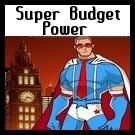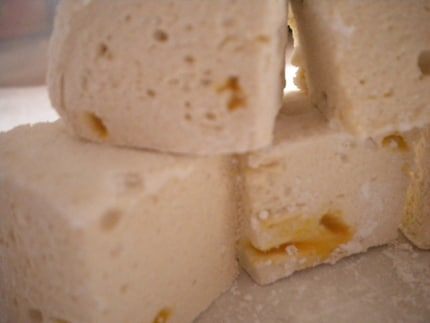Hello! Welcome to the next post in my Coupons for Beginners series. If you are just coming in to the series, that's fine. Sit down, take a load off and prepare to learn!! You can always catch up with the introductory post "Coupons for Beginners" later. Today we are examining the basics of coupons. Specifically the little paper coupon in your hot little hand ;).
Topics of importance in this article will be:
The anatomy of a coupon.
What types of coupons are there?
Coupon Lingo
Coupon Fraud? What's that!
As you can see from my coupon here, I am going to soon be selling my very own brand of cereal. It comes in Quarts instead of Ounces ;). Okay, all kidding aside - I thought it might be helpful to come up with a coupon mock-up for us to look at together while I show you a few important landmarks on a typical coupon.
Here are the basic parts of the coupon you should be familiar with:
Coupon Category: See in the upper left hand corner where the coupon says "MANUFACTURER COUPON"? This means the coupon is put out by the manufacturer and can be used at any store. Store coupons are limited to specific stores (or stores that accept competitor coupons) and may say STORE COUPON or be branded in a more specific manner.
Some additional coupons may print with a specific store logo on them but state "MANUFACTURER COUPON" on them. (Another type of coupon included here would be some of the Kroger "Best Customer" coupons that they mail to you that have a Kroger logo on them but specifically state "MANUFACTURER". Your results will depend upon where you are attempting to redeem this particular kind of coupon. It's a situation where "Your Mileage May Vary (YMMV)." Publix will accept all of these types of coupons AS LONG AS they are from a store that is considered a competitor. If you are unsure, I highly recommend that you ask at the customer service desk about coupons like this before you shop, that way you don't waste time or energy shopping for items you may decide to leave behind if they won't take that coupon.
- Expiration Date: The upper right corner of the coupon is the normal location for the expiration date. Not always, but pretty frequently, you can find it there. This coupon expired 12/1/1975.
Coupon "Value": This coupon is for $1.44 off ONE box of cereal. in coupon matchups this might be reported as $1.44/1. Note the requirements for box size. You must buy at least a 10 Quart box. Now, THAT is a LOT of cereal ;)
The Fine Print: This is made up of two separate sections. A message to the consumer and a message to the store who redeems the coupon. Sometimes you will see specific limitations for coupons in this section. A common one is "LIMIT: ONE COUPON PER PURCHASE." This confuses many people. Going back to our example, this means you can use ONE coupon per box of cereal. You cannot use 4 coupons on the SAME box of cereal but if you have four coupons you may buy four boxes of cereal and use a coupon on each box all on the same transaction. Sadly, some cashiers believe this statement means "one per transaction" and will make you check out with multiple transactions.
UPC or Bar Code: The important part here is the grouping of numbers below the barcode. We are only going to look at one number. Do you see the baby number "5" off to the left? All by himself? Yeah...him. He tells us that this coupon WILL double as long as the store doubles to or above the value of this coupon, REGARDLESS of any text on the coupon that says otherwise. The reason for this is that coupon scanners cannot read, so they rely on the barcode to TELL them whether or not to double coupons. The cashier can suppress doubling and it is their right IF the coupon says "Do not double or triple" on it. The number "9" in that location will always prevent doubling. This number will always be either a "0", "5" or "9." The 5 allows the system to double it, the 9 prevents doubling and I have read that the 0 forces the system to double the coupon but so far that is unverified information as I have never personally run across a coupon that starts with a 0 there.
Coupon Categories
There are several categories you can break a pile of coupons down into. I will share all of the ones I can think of :)
Manufacturer vs. Store vs. Total Amount Coupons.
Manufacturer Coupons- Issued by the manufacturer. You can use these anywhere. They are typically for a dollar amount off of a particular product. ($1.00 off 3 boxes of cereal)
Store Coupons- Issued by the Store. Can only be used in a store of the issuer. Sometimes accepted as competitor coupons. Sometimes also come as "Total Amount" coupons.- Competitor Coupons - Coupon issued by a competing store to where you are shopping. (example: You are shopping in Publix and have many Kroger Catalina coupons. Those are Competitor coupons) (NOTE: A Catalina coupon is that little slip of paper that prints on the printer beside your receipt printer. Register Rewards at Walgreens is an example of a Catalina Coupon!)
- Total Order/Total Amount Coupons - Coupon issued by the store OR a manufacturer stating a total dollar amount off the order. Sometimes these have no strings: (Save $4.00 off your next order!) and sometimes they have limitations: (Save $5.00 off your next purchase of $30 or more.) I have seen this type of coupon range in value from 50¢ off your next order all the way up to $15.00/$50.00 purchase.
Coupon Lingo....Confused yet???
When I first began couponing, I went through life confused for several weeks. Always trying to figure out this abbreviation or that one and it was so frustrating! I hope to fix all of that for you :)
Coupon lingo can be very confusing. I have placed the Couponing Lingo information in a separate post in case you want to bookmark that post and use it as a handy reference guide.
Coupon Fraud - I didn't know that was illegal!?
While listening to the radio a few months ago, I almost drove off of the road because of something I heard! This particular station has a game called "Are you cheaper than a (Producer's Name)?" The producer IS pretty cheap, this lady who called in said that she had actually photo copied coupons onto newsprint with her color copier. Front and back...so it would look like a regular coupon. That is fraud! You absolutely can't do that! So I want to be SURE I address this subject before we are too far along.
I don't want anyone to break the law accidentally. There are PLENTY of ways to save tons of cash legally. No need to commit fraud! It should go without saying but a lot of folks don't know this so I'm going to go on ahead and say it...do not ever, ever, EVER Photocopy a coupon. Printable, insert or otherwise....I've overheard some people say that the stores/manufacturers can't tell who printed the coupons anyway so they photocopy them. If you read that microscopic print that makes up the line around your coupon...you will find YOUR IP Address there. :) They WILL find you....and it won't be pretty :(
I hope that you enjoyed todays installment of Coupons for Beginners and I hope you are looking forward to tomorrow when we will answer that timely question "(Where do I get coupons??)"
Catch up with the other posts in this Series:
Couponing For Beginners
Coupon Basics
Coupon Lingo
Where do I get coupons??
Coupon Organization
Setting and Sticking to your Budget
Meal Planning 101
What is a Stockpile?
Sale Strategies
























 You can find more information
You can find more information
0 comments:
Post a Comment